Kia Sorento Vs Hyundai Santa Fe: Which Korean Mid-Size Crossover Is Right For You?
The Kia Sorento and Hyundai Sante Fe compete in the packed mid-sized SUV segment.
But they often get lost among some better-known names, however, if you want loads of content without paying loads of cash, these two Korean models are ideal. The Hyundai and Kia brands started out as the go-to names for those drivers who were only concerned about paying as little as possible for their vehicle, but over the course of the past two decades, they have become leaders in bang-for-the-buck.
If you want a mid-sized sport utility vehicle that offers a long list of premium amenities inside and out, without paying luxury pricing, the Kia Sorento and Hyundai Sante Fe both fit the bill. Although they are based on the same shared chassis platform and share their drivetrain components, the interior layout of these two mid-sized SUVs is very different. With the two being so closely related shy of the seating configuration, which one is right for you?
Today, we look at all of the key aspects and features of the Kia Sorento and Hyundai Sante Fe, looking at the similarities, the differences, and which shines bright in the most important areas.
Cabin Space
The Kia Sorento and Hyundai Sante Fe are similar in many ways, but the layout of the interior of the two Korean midsized SUVs is where they differ the most. While they are the same basic size, the Sorento is a 3-row vehicle that seats 6 or 7 depending on the seating configuration while the Sante Fe is a 2-row vehicle with seating for 5. This difference gives each vehicle its own distinct advantages.
Sorento: In the front row of the Kia Sorento, the driver will enjoy 40.3 inches of headroom, 59 inches of shoulder room, 55.5 inches of hip room, and 41.1 inches of legroom. The second row of seats is a bit smaller than the front seats in some measurements but larger in others. Second-row passengers get 39.1 inches of headroom, 58 inches of shoulder room, 55 inches of hip room, and 41.7 inches of legroom. This is also where the buyer decides if they want to seat 6 or 7 people, picking between a bench seat and captain’s chairs. The third row is smaller, as you would expect, serving best as a spot for children. Third-row riders get 36.8 inches of headroom, 53 inches of shoulder room, 42.5 inches of hip room, and 29.6 inches of legroom, which is where the third row is the tightest.
Get a Quote on a New Kia Sorento or Hyundai Santa FeSante Fe: The Hyundai Sante Fe comes standard with seating for 5 across the first and second row. The driver and front passenger get 41.2 inches of headroom, 59.1 inches of shoulder room, 57.5 inches of hip room, and 44.1 inches of legroom. Those folks seated in the second row get 39 inches of headroom, 58.3 inches of shoulder room, 56.3 inches of hip room, and 41.7 inches of legroom.
Bottom Line: If you need to seat 6 or 7, the Sorento is the easy pick, but if you rarely need seating for more than 5 people, the decision is a bit tougher. The Sante Fe offers more space for the driver and front passenger, but second-row measurements are very similar, giving the overall advantage to the Kia Sorento.
Cargo and Towing
Due to the differences in interior layout, the Kia Sorento and Hyundai Sante Fe have quite a bit of difference in cargo space as well, especially when you start folding down the seats. Meanwhile, with the shared drivetrain and chassis components, the two have identical towing capacities.
Sorento: If you fold down the second and third rows of seats in the Kia Sorento, you have 75.5 cubic feet of cargo space behind the first row. If you need to seat passengers in the second row, the area behind it will still hold 45 cubic feet of cargo. Of course, with the third row in the upright position, cargo space is cut down a great deal, but with 12.6 cubic feet, there is still some room for larger items.
As for towing, the Kia Sorento with the naturally aspirated engine can pull up to 2,000 pounds while turbocharged models, can tow up to 3,500 pounds.
Sante Fe: If you are looking for the most cargo capacity from the Hyundai Sante Fe, you will want told fold down the second row of seats, unlocking 72.1 cubic feet for larger items. If you are using both rows of seats, the traditional seating layout offers 36.4 cubic of cargo capacity.
As is the case with the Sorento, the naturally aspirated Sante Fe will tow up to 2,000 pounds while the turbocharged engine will tow as much as 3,500 pounds.
Bottom Line: If your key concern in picking your new mid-size SUV is towing capacity, it is a dead heat between these two, but the Kia Sorento has a defined advantage in cargo capacity across the board. Whether you are using 1 or 2 rows of seats, the Kia offers more cargo space and since the Hyundai has no third row, the combination of the extra seats and some cargo space gives the Sorento the win in this category.
Technology and Features
The Kia Sorento and Hyundai Sante Fe are both packed with premium interior technology, and while each mid-size SUV has a unique look throughout the cabin, the two offer similar gadgets.
Sorento: The Kia Sorento comes with a long list of standard features regardless of the trim level chosen. All models come with a touchscreen-based infotainment system with an 8-inch screen in the LX, S, and EX models while the SX and SX Prestige models showcase a 10.25-inch touchscreen system. Next, every Sorento comes with Android Auto and Apple Carplay connectivity, steering-wheel-mounted audio controls, USB charging ports in all three rows, a 12-volt power outlet in the front row, and another in the cargo area, a tilt/telescoping steering column, power door locks, and power windows.
In terms of optional gadgets, SiriusXM satellite radio, UVO link remote connectivity, and Dual-Zone Automatic Temperature Control are standard on all models other than the base. A 4.2-inch gauge cluster and a 6-speaker sound system are standard in LX, S, EX, and SX models while the SX Prestige models come with a 12-speaker Bose system and the 12.3-inch Supervision Meter Cluster LCD display. Bluetooth connectivity is standard on SX and SX Prestige models, a wireless phone charger is standard on EX, SX and SX Prestige models and the Smart Key system comes on all models, but in the base Sorento, it is simply keyless entry while the other models feature remote start and an immobilizer. Finally, the SX Prestige package includes an auto-dimming rearview mirror and a heated steering wheel.
The Kia Sorento LX comes standard with cloth seats featuring a 6-way adjustable driver’s seat, a 4-way adjustable front passenger seat, a 60/40 split second row, and reclining 50/50 split third-row seats. When you step up to the Sorento S, you get SynTex leather on the seats from front to rear, with a 10-way adjustable driver’s seat, a 4-way adjustable front passenger’s seat, a 60/40 split second-row, and reclining 50/50 split third-row seats. The EX models have the same SynTex upholstery, front seats, and third-row seats as the S models, but the EX features second-row captain’s chairs, which reduce the maximum occupancy to 6 people. Sorento SX and SX Prestige models come with the 10-way power-adjustable driver’s seat, an 8-way power-adjustable passenger’s seat, second-row captain’s chairs, and the 50/50 split third-row seat, all of which are wrapped in SynTex in the SX and premium leather in the SX Prestige. Heated seating surfaces are standard on S, EX, SX, and SX Prestige models, as are a leather-wrapped steering wheel and gear shift handle, while the SX Prestige models feature exclusive cooled seats.
Sante Fe: The Hyundai Sante Fe SE and SEL come with an 8-inch color touchscreen-based infotainment system while Limited and Calligraphy models come with the 10.25-inch touchscreen. Next, all Sante Fe models come with Android Auto and Apple Carplay Bluetooth connectivity, the Rear View Monitor with parking guidance, steering wheel controls for the audio and cruise control systems, a tilt/telescoping steering column, Smart Cruise Control with Stop & Go, power door locks and power windows.
A 4.2-inch color Multi-Information Display cluster and a 6-speaker sound system are standard in SE and SEL models while Limited and Calligraphy models come with a 12.3-inch digital gauge cluster and a premium Harman Kardon 12-speaker sound system. Next, Blue Link Connection Car Services, HD Radio, and wireless charging are standard with all models above the base SE while the Surround View Monitor, Blind Spot Monitoring system, automatic climate control, an auto-dimming rearview mirror with HomeLink and a heated, leather-wrapped steering wheel is standard on Limited and Calligraphy models. Finally, a heads-up display is standard on the two Calligraphy models.
The Hyundai Sante Fe SE comes with Yes Essentials stain-resistant cloth seats with a 6-way adjustable driver’s seat and a 60/40 split-folding second-row bench seat. The Sante Fe SEL has the same upholstery and rear seat, but it adds an 8-way power-adjustable driver’s seat, an optional 8-way power-adjustable front passenger seat, and heated surfaces for both front seats. When you get to the Limited models, you gain leather seating surfaces on the said power-adjustable front seats and 60/40 rear seats, ventilated front seats in addition to the heated seats and heated rear seats. Finally, the Calligraphy models come with premium quilted Nappa leather seating surfaces, 8-way power-adjustable front seats that are both heated and cooled, and a 60/40 split rear seat with heat for the outboard spots.
Bottom Line: The Kia Sorento and Hyundai Sante Fe offer many of the same interior features, but the list of standard equipment varies by trim level. The Sante Fe offers more high-end technology and seating earlier in the lineup while offering more premium features on the top-of-the-line models, giving Hyundai an advantage in terms of interior luxury.
Powertrain
The Kia Sorento and Hyundai Sante Fe feature the same engines, transmissions, and drive configurations across each lineup. This includes a naturally aspirated 4-cylinder and a turbocharged 4-cylinder, each of which is mated to an 8-speed automatic transmission and the buyer’s choice of front- or all-wheel-drive in every trim level.
Sorento: The Kia Sorento in LX and S trim are powered by the naturally aspirated 2.5-liter 4-cylinder with 191 horsepower and 181 lb-ft of torque. That engine is mated to an 8-speed automatic transmission and either front- or all-wheel-drive. The Sorento in EX, SX, and SX Prestige trim comes with the turbocharged 2.5-liter 4-cylinder, delivering 281 horsepower and 311 lb-ft of torque. This engine also comes with an 8-speed automatic, but turbo models feature a dual-clutch transmission and, like the naturally aspirated models, these turbo models are available with either front- or all-wheel-drive.
Sante Fe: The Hyundai Sante Fe has the same engines, transmissions, and drive configurations shared across five trim levels, but there is one small difference. The Sante Fe SE and SEL come with the naturally aspirated 2.5-liter 4-cylinder engine, offering 191 horsepower and 181 lb-ft of torque with an 8-speed automatic transmission and the buyer’s choice of front- or all-wheel-drive. The Sante Fe Limited and Calligraphy come with the turbocharged 2.4-liter 4-cylinder engine with 281 horsepower and 311 lb-ft of torque, the 8-speed dual-clutch automatic transmission, and the buyer’s choice of front- or all-wheel-drive. The top-of-the-line Calligraphy 2.5T AWD comes with the turbocharged engine and the 8-speed dual-clutch gearbox, but all-wheel-drive is standard.
Bottom Line: The Kia Sorento and Hyundai Sante Fe offer the exact same engines, transmissions, and drivetrain layouts with the same power numbers, so based on those figures, there is no difference between the two. However, the Sante Fe weighs at least a hundred pounds less when the similar trim lines are compared, so the Hyundai will feel a bit quicker than the Kia, making the Sante Fe the choice of those buyers who are focused more on fun-to-drive factor.
Fuel Economy
The Kia Sorento and Hyundai Sante Fe share chassis and drivetrain components, so it shouldn’t come as much of a surprise that their fuel economy numbers are nearly identical. However, with the Kia being a bit bigger and heavier, there are some small differences in the official MPG ratings.
Sorento: The Kia Sorento with the naturally aspirated 4-cylinder engine and front-wheel-drive is rated at 24 miles-per-gallon around town, 29 mpg on the highway, and 26 mpg combined. When you add all-wheel-drive to the Sorento LX and S, fuel economy numbers drop to 23 in the city, 25 on the highway, and 24 combined. In most cases, stepping up to a significantly more powerful engine will greatly reduce fuel economy, but that isn’t the case for the Sorento. The turbocharged engine in the EX and SX models offers 22 mpg around town, 29 mph on the highway, and 25 combined while the all-wheel-drive turbocharged models are rated at 21 city, 28 highway, and 24 combined.
All Sorento models come with a 17.7 gallon fuel tank.
Sante Fe: The Hyundai Sante Fe SE and SEL models with the naturally aspirated 2.5-liter 4-cylinder are rated as offering 25 miles-per-gallon in the city, 28 on the highway, and 26 mpg combined. The naturally aspirated all-wheel-drive models are expected to return 22 mpg city, 25 on the highway, and 24 combined over the course of normal driving. The Hyundai Limited and Calligraphy models with the turbocharged engine and front-drive are rated at 22 around town, 28 on the highway, and 25 mpg combined while those two models with all-wheel-drive – and the range-topping Calligraphy 2.5T AWD – all offer 21 mpg around town, 28 on the highway and 24 combined.
All Sante Fe models come with an 18.8 gallon fuel tank.
Bottom Line: When comparing the official fuel economy ratings of these two SUVs, the difference between similar drivetrain configurations is within one mile-per-gallon, so the Sorento and Sante Fe practically offer the same real-world fuel economy numbers. However, with the larger fuel tank, the Sante Fe is the better vehicle for people who do lots of driving, offering more range-per-tank than the Sorento.
Safety
The Kia Sorento and Hyundai Sante Fe both come with all of the common safety features, from airbags to alert systems to intelligent cruise control. While many of the features are shared between the two, there are some differences in which features are standard on which trim levels.
Sorento: The Kia Sorento comes with a long list of standard safety features which come on every trim level, including forward collision avoidance-assist with pedestrian detection, driver attention warning, Lane Departure Warning, lane-keeping assist, lane follow assist, high beam assist, rear view monitor with dynamic parking guidance, dual front advanced airbags, dual front-side airbags, dual rear-side airbags, full-length side curtain airbags, driver’s knee airbag, front seatbelt pre-tensioners, anti-lock brakes, 4-wheel disc brakes, Electronic Stability Control, Traction Control, Hill Start Assist and a tire pressure monitoring system.
SEE ALSO: 2021 Kia Sorento Review: First DriveAll of the Sorento models above the base trim level come with rear Cross traffic collision avoidance assist, reverse parking distance warning, blind-spot collision avoidance assist and safe exit assist. Sorento EX, SX and SX Prestige models include forward collision avoidance assist and Smart Cruise Control with stop and go while the SX Prestige models also add the Surround View Monitor, blind view monitor, front and rear parking distance warning, Highway Driving Assist, and Reverse Parking Collision-Avoidance Assist.
Sante Fe: The Hyundai Sante Fe also comes with a long list of standard safety items on every trim level and once again, many of these features are shared between the two SUVs. However, if you look closely at standard and optional features, you will see that the Sante Fe has a few standard safety items that are options on the Kia. Standard Sante Fe safety features include adjustable front seat shoulder belt anchors, front seatbelt pre-tensioners, power window lockout button, anti-lock brakes, 4-wheel disc brakes, ESP, traction control, brake assist, vehicle stability management, a tire pressure monitoring system, hill start assist control, rear occupant alert, forward collision avoidance assist, smart cruise control with stop and go, lane-keeping assist, driver attention warning and rear view monitor with parking guidance.
All Sante Fe models above the base SE come with blind-spot collision avoidance assist, rear cross-traffic collision avoidance assist, safe exit assist, Highway Driving Assist, and Lane Follow Assist. All Limited and Calligraphy models also add forward and reverse parking sensors, Remote Smart Parking Assist, blind-spot view monitor, and the surround view monitor.
Bottom Line: The Kia Sorento and Hyundai Sante Fe come with many of the same safety features, but the Sante Fe offers more standard safety features and more of the optional features are included across more trim levels, giving the Hyundai the advantage in safety tech.
Pricing
Considering that the Kia Sorento offers greater interior space, it comes as little surprise that is also costs a little more than the Hyundai Sante Fe, but the difference between the two when comparing similar trim levels is almost negligible.
Sorento: The Kia Sorento LX with front-wheel-drive starts at $30,565 while the all-wheel-drive version starts $1,800 higher at $32,365. That $1,800 upcharge for all-wheel-drive is uniform across all models, so the Sorento S starts at $33,065 for front-drive while all-wheel-drive starts at $34,865. For the EX models, the front-wheel-drive starts at $36,165, and AWD models start at $37,65 while the front-drive Sorento SX starts at $39,165 and the AWD version starts at $40,965. The top-of-the-line SX Prestige models start at $41,765 for front-drive while all-wheel-drive models start at $43,765.
Sante Fe: The Hyundai Sante Fe SE with front-wheel-drive starts at $28,175 and, like the Kia, all-wheel-drive adds $1,800 to the bottom line, leading to a “base AWD” price of $29,875. If you step up to the Sante Fe SEL, front-wheel-drive starts at $29,975 and AWD starts at $31,675 while the Limited models start at $39,925 for front-wheel-drive and $41,625 for all-wheel-drive. The premium Calligraphy models start at $41,925 for front-drive and $43,425 for all-wheel-drive, while the loaded Calligraphy 2.5T AWD with 19-inch wheels also starts at $43,425 with standard all-wheel-drive.
Bottom Line: If you are shopping for your new midsized SUV on a tight budget, the Hyundai Sante Fe has a defined advantage across the entire model range. Whether you are looking at a front-drive base model or a loaded premium package, the Kia costs a couple thousand dollars more, making the Hyundai the better for budget-minded shoppers.
Verdict
The Kia Sorento and Hyundai Sante Fe are closely related, but in picking between the two, your key focus should be on whether or not you need the extra row of seats. If you need to seat 6 or 7 people regularly, the Sorento is the easy choice. If you rarely travel with more than 4 passengers, the decision is a bit tougher. The Kia offers more cargo-hauling capacity, but the Hyundai offers more standard technology, more standard safety features and the same levels of power for less money, making the Sante Fe the winner in this comparison.
Become an AutoGuide insider. Get the latest from the automotive world first by subscribing to our newsletter here.
Patrick Rall has been covering the automotive industry for over a decade, but was born into car culture. Having grown up in his father's performance shop, he spent extensive time at the track, driving and wrenching on various types of vehicles.
More by Patrick Rall



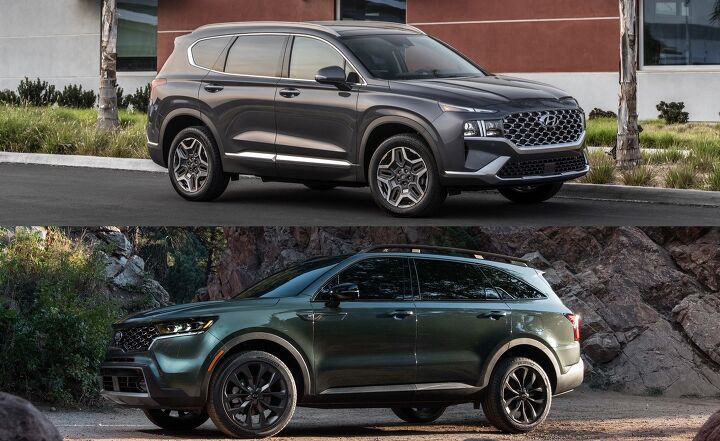
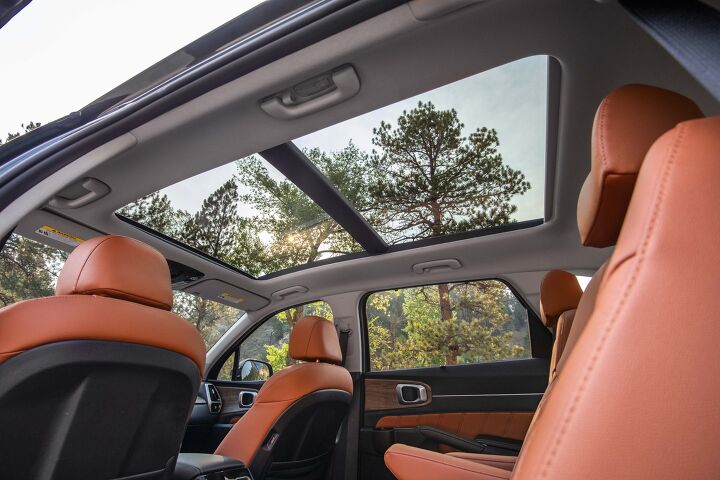
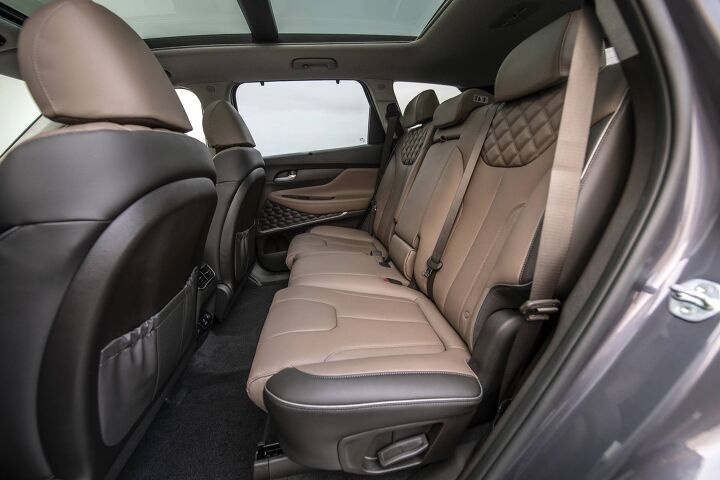
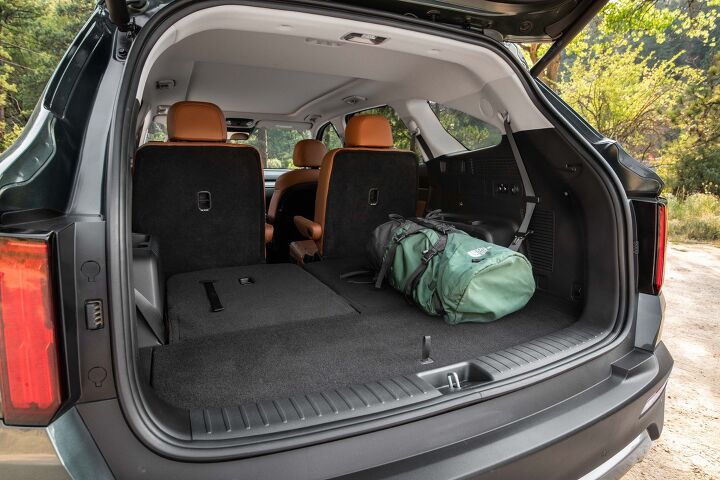










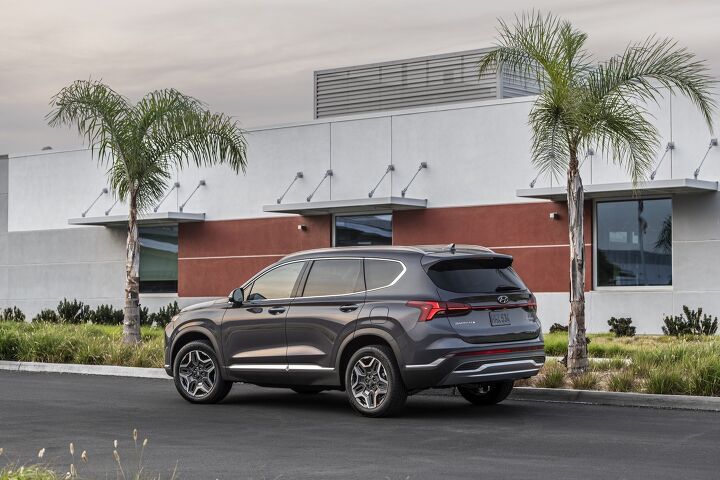















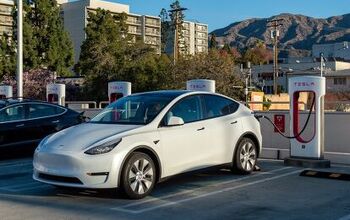
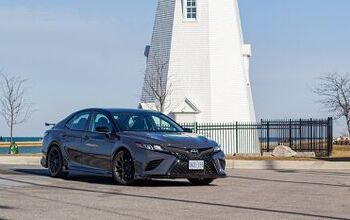
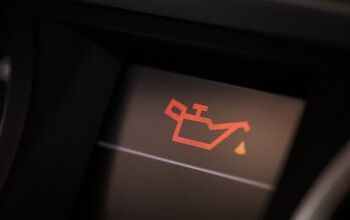

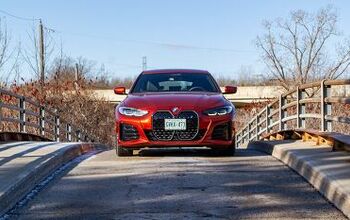



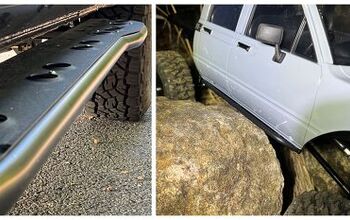

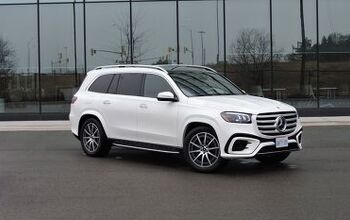




Comments
Join the conversation
Wonderful cars for me I'll go for the Hyundai
I recently purchased a 2022 Santa Fe Limited and I have to say it is super quiet which I believe is due to the fact that the front driver and passenger door windows are laminate glass (like the windshield) smoothest transmission shifting I have ever experienced. The limited has all the bells and whistles, it's a lovely suv and I really like it. Hope this helps